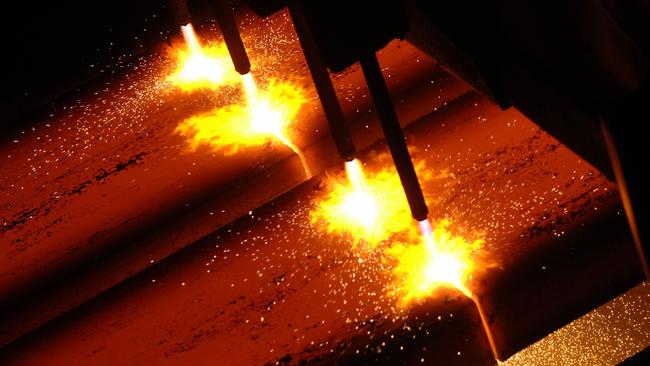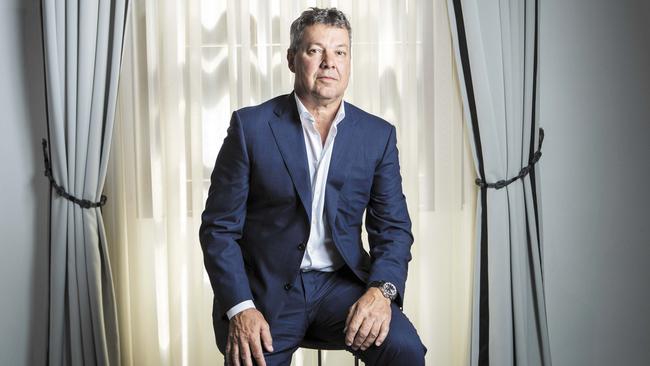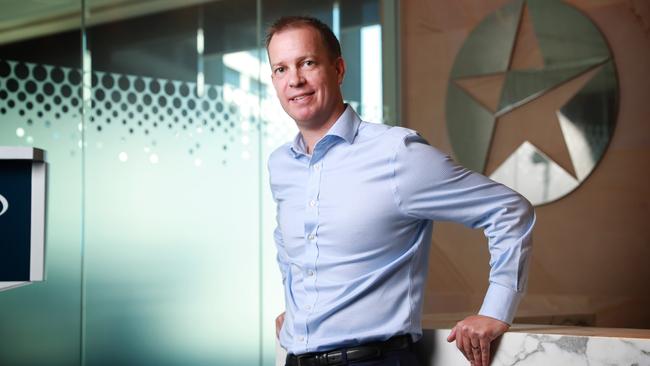
In unveiling record financial numbers, Vassella appointed NZ Steel boss Gretta Stephens as head of his climate change division, showing his commitment to the challenge.
Nice touch when his most immediate investment decision will be to stick with the old when relining the mothballed No 6 blast furnace to replace his ageing plant, which is due to finish sometime after 2026.
The former Rio Tinto aluminium executive, who has been running New Zealand Steel, will have the job of doing what she can to help BlueScope make what ground it can in cutting carbon emissions.
Its most effective measure to date was in 2011, when it mothballed No 6, sacked 1000 staff and 500 contractors. Its Port Kembla operations just survived with worker and government support.

Vassella was running the plant then and now he has the good fortune to see it running at record levels of production due to the COVID boom in house renovations and mass migration to the regions away from multi-dwelling apartments in the cities.
Alex Hewitt, from the Asia Renewable Hub, Australia’s most advanced large-scale hydrogen plant, is one who can understand Vassella’s position.
The federal government has talked up hydrogen as being a fuel of the future but, unlike European counterparts, kept a million miles from setting a carbon price to encourage investment and so far talked up a storm without doing very much.
Hewitt’s plant will have a final investment decision in 2024, meaning first production won’t be until 2027 and, even though he is storing the green hydrogen in ammonia, it has some transport issues. Without ammonia, the hydrogen needs to be stored at minus 250C, double that of LNG.
Vassella’s Port Kembla steel mill will need a new blast furnace around 2026 and, rather than fast forwarding to green steel, his present plan is to spend $750m preparing an idled blast furnace to carry the load going forward.
He says European mills in Sweden and Germany are using hydrogen, but not on the scale he needs.
Liberty Steel’s Sanjeev Gupta, it should be noted, has for the moment given up hopes of spending $US1.8bn ($2.3bn) to buy Thyssenkrupp in Germany because the two sides are too far away on price.
He still plans on floating his Infrabuild steel assets in Australia around September this year.
Vassella presented a timely reality check to all those talking up green hydrogen as the new feedstock for steelmaking.
There is a long list of factors that east coast manufacturers have to consider when looking at hydrogen, which is water and energy-intensive needing both plentiful wind and solar. Green hydrogen needs renewable power to split the hydrogen through electrolysis, and plenty of water.
It’s got transport issues, which is why bullish NSW Energy Minister Matt Kean is talking about local hubs, but all in all it’s not as simple as digging iron ore out of the ground.
Gas is a poor alternative and also expensive when hydrogen at $5-$6 a kilogram equates to gas at $44 a gigajoule.
Vassella’s maths says the hydrogen price is five times the price of gas, which is where the infamous carbon price comes into it.
All of a sudden, when Scott Morrison talks up hydrogen as being the alternate source of energy, the all-encompassing nature of that call comes to life.
Vassella, who it must be said is no slouch when it comes to technology, is taking a conservative approach.
The 2011 retrenchments are not a replacement for investments in the future.
It would, of course, help if Canberra could support the cause.
Halliday bearish
Ampol’s Matt Halliday was decidedly bearish about everything except for his convenience store operations on Monday, leaving a question mark over the 56-year-old Lytton refinery in Brisbane.
Full volumes overall would fall a touch to about 13.5 billion litres, down from 16.3 billion litres pre-COVID in 2019, with jet fuel volumes down some 56 per cent.
Ampol is heavily dependent on international travel for its jet fuel business and that doesn’t look likely for the next 12 months.

While fuel volumes are weak, more people are returning to its convenience stores, which were the bright spot in Monday’s numbers — up 42 per cent at $287m.
The refinery margin, which is akin to the import parity price, stood at $4.70 a litre, which is below the cost of production in Australia and down from $8.08 in 2019. It also explains the fall in fuel earnings from $380m to $299m last year.
Then there is closure of other refineries, which means existing swap arrangements are effectively void, all of which suggests Halliday will shut Lytton by mid year.
But Halliday refused to be drawn on the issue.
Focus on NIB
COVID had some obvious negatives on health insurer NIB given the impact on travel insurance, international students and surgery deferrals, but pandemics also focus customer attention and remind them of the risks out there.
Despite the loss of key markets, this meant Mark Fitzgibbon’s outfit lifted new members by 2.7 per cent, with 52 per cent of those aged under 40 and 40 per cent new to private health insurance.
Strong investment returns helped lift net profit by 15.9 per cent to $66.2m, despite a 1.1 per cent fall in revenues to $1.3bn.
Fitzgibbon is hopeful the renewed focus will continue to boost interest and, through his Cigna data science joint venture Honeysuckle and digital investment, help boost customer support.
Vale Mac’s Caldon
On a day in which Macquarie Bank upgraded its profit forecasts, it is perhaps timely to note the sad passing of one of its past legends, structured finance guru John Caldon, aged 74.
Caldon, who was recruited to the bank in 1984 by the late Robin Crawford and then boss Tony Berg, was an intellectual force behind the firm’s structured finance business, where he played a key role in creating its funds management business and its public-private partnership model.
A charming man with a searing intellect, he helped train a couple of juniors by the names of Nicholas Moore and Shemara Wikramanayake, who ended up running the bank.
A famed people person, he was also known as a great team builder at the bank.
He left the business in 1998 and helped his partner Lyndey Milan establish media business Flame Media.
At the time of his departure he was deputy managing director, head of relationship management for key clients and government, head of project and structured finance, head of infrastructure funds management and joint head of underwriting.
A recital in his honour will be held at the Sydney City Recital Hall on Thursday.






BlueScope’s Mark Vassella is at the top of his game in steelmaking and also is handy at managing expectations about the renewable future.